The castle of Heraklion, Candia, had four main gates in four points:
- On the north side, at the end of today’s August 25 Street, was the gate of Molos, which connected the town with the port.
- In eastern side, near today’s statue of Eleftherios Venizelos, was the gate of St. George or Lazaretto, which connected Candia with Eastern Crete and with the quarantine hospital (lazaretto).
- On the south side of the walls, in 1587, the Venetians built the gate of Jesus or New Gate (Kenourgia Porta) (Kenourgia Porta). The roads starting from here led to the southern provinces of the county. Today's Kenourgia Porta bears no resemblance to the gate of that season.
- On the west side, at the end of the square Strata (Strata Larga - today’s Kalokairinou Street) was built the Gate of Pantokratoras (Panigra). Through this gate, the town communicated with Western Crete.
The three land gates of St. George, Jesus and Pantokratoras closed internally and externally, with very heavy and solid doors. The closing hours were at sunset and the opening at dawn. Those who stayed outside the walls, slept in special domed buildings for this purpose. The gates were protected by semicircular protrusions called Orecchione (large ears).
Besides the four main gates, there were still three more for military purposes. These were the gate of St Andrew (NW), the gate of Sand or Sabionera (BA) and the Gate of Dermatas leading to the homonym bay (located next to the Museum of Natural History). The last gate was built for the case of exclusion of the mouth of the main Venetian harbour. Near that gate, the volunteers of the Count De La Feuillades were bombarded by the Turkish army (Nov. 1668) and opened the way to occupy Candia. The gate is now located next to the municipal parking, opposite the Bodosakio Primary School.
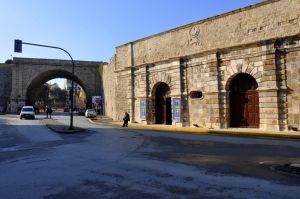
Gate Pantocrator, known more as Chanioporta, is one of the central points of Heraklion and used to be the main exit to the western Crete. From a single room inside the gate start two arched galleries with different entrances, one (the main) leading to the west and the other (military gallery) leading to the southern low square of bastion Pantocrator.
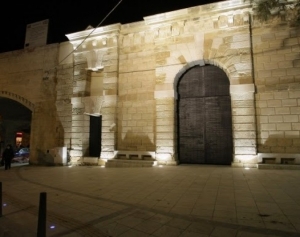
Gate of Jesus or New Gate (Kenourgia Porta) was built on the south side of the Venetian Walls, in today's Evans Street, in 1587. From this gate left those who were heading to the southern provinces of the county. The gate also hosted the pipeline which supplied water to the city.
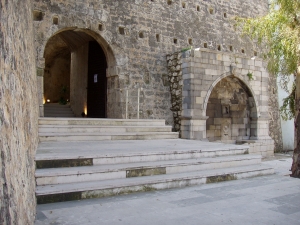
The gate of St. George is situated on the eastern side of the Walls of Candia, below the current statue of Eleftherios Venizelos. From this gate the city communicated with the eastern Crete and the quarantine (Lazareto - so it is also known as Gate Lazaretto). Another name was Gate Maroulas, as it headed to the neighborhood of Maroulas, near the current school of Kapetanakion.
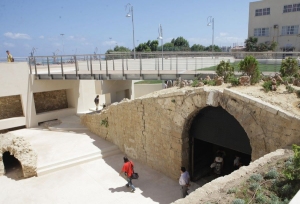
The Gate of the Sand (Sabionara) is located on the northwest side of the bastion Sabionara. It connected the city with the sandy beach east of the port.
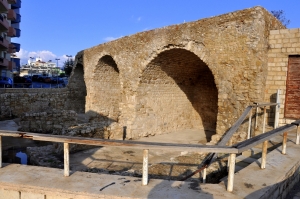
Gate Dermatas is located approximately in the middle of the coastal walls of Candia (current Heraklion), at the site of the Bodossakion School and connected the walled city with the sea. It was actually used as a backup gate, in case the mouth of the main port was blocked
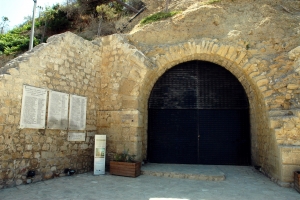
The Gate Makasi (meaning "switchman" in Turkish) is a military gate of the Venetian Walls of Heraklion, the gallery of which had a length of 110 meters. The gallery leads to the eastern low square of Martinengo bastion, that housed the canons that protected the bastion Bethlehem.
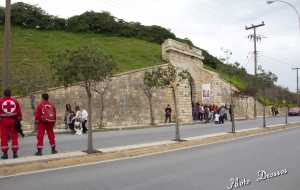
Gate Bethlehem is located on the western side of the Venetian Walls of Heraklion and was a military gate. It lead to the north low square of Bethlehem Bastion, where there were the cannons that protected the bastion of Pantocrator.
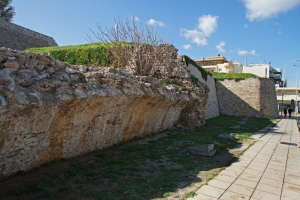
The gate of St. Andrew is located at the northwestern part of the bastion of Saint Andrew. The gate was unfortunately destroyed in the early 20th century to open up the coastal road of Heraklion, since the monuments had no value for the rulers of Heraklion. Today we only distinguish the southern part of the arched tunnel.












































































